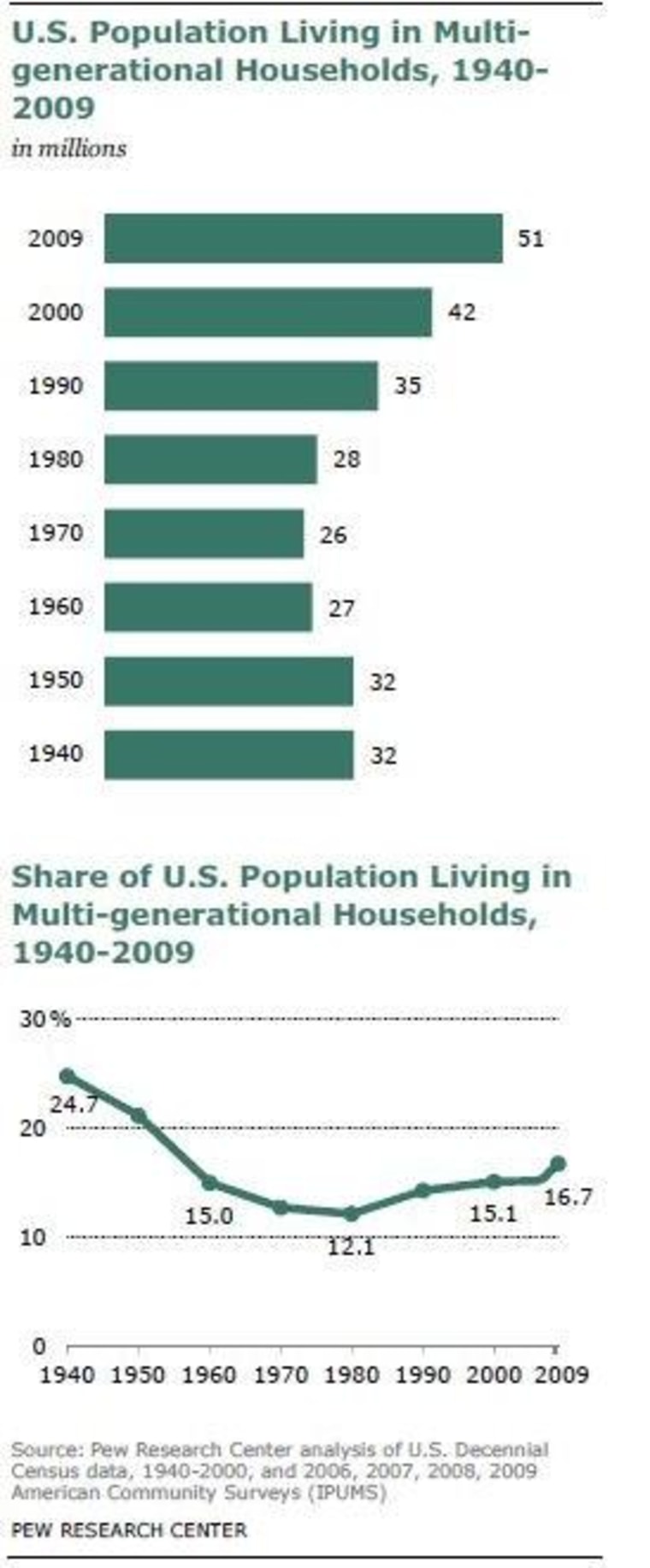The Great Recession appears to have brought families closer together, literally: The share of Americans who are living in multigenerational households has spiked as the economy has tanked.
About 51.4 million people were living in some kind of multigenerational household in 2009, according to the Pew Research Center’s analysis of the Census data released last month. That’s a more than 10 percent increase from just two years earlier, when about 46.5 million people were living with another generation of their family, according to Pew.
The percentage of Americans who are living with multiple generations has been on the rise for a few decades, reversing a trend toward living apart that had begun in the 1940s. About 16.7 percent of Americans lived with someone from another generation in 2009, up from 15.1 percent in 2000.
Pew found that more than half of the multigenerational householdsinclude two adult generations, such as an adult child and his or her parents. The second largest group includes multiple generations, such as Grandma, Mom and Dad and their child. There’s also a small group of households with a skipped generation, such as grandparents living with their grandchildren.
There are clear financial advantages to living with your family. The Pew analysis found that the poverty rate for families in multigenerational householdswas lower than people in other types of households.
Sharing a household with Mom, Dad or your adult child is an even bigger help if you are out of a job. The overall poverty rate for unemployed people was 30.3 percent, according to Pew. But for people living with another generation, it was just 17.5 percent.
The spike in multigenerational households also reflects how tough the weak economy has been on younger adults. The analysis found that more than 20 percent of 25- to 34-year-olds were living in some type of multigenerational household.
Related:
